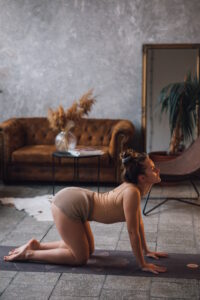
Creating a home Pilates practice routine can be a wonderful way to integrate Pilates into your daily life, allowing you to experience the benefits of this exercise method at your convenience. By establishing a consistent and personalized routine, you can develop strength, flexibility, and body awareness in the comfort of your own home. In this guide, we will explore the process of creating a home Pilates practice routine, providing insights on designing your own routine, getting started as a beginner, teaching yourself Pilates at home, and determining the best type of Pilates for beginners.
How do I make my own Pilates routine?
Designing your own Pilates routine allows you to tailor the practice to your specific needs and goals. Here are some steps to help you create your own Pilates routine:
1. Assess Your Goals and Needs: Determine what you want to achieve through your Pilates practice. Whether it’s improving core strength, increasing flexibility, or enhancing overall well-being, clarify your goals to guide the creation of your routine.
2. Choose the Pilates Exercises: Select a variety of Pilates exercises that target different muscle groups and movement patterns. Include exercises that focus on core strength, flexibility, and overall body conditioning.
3. Consider Time and Frequency: Determine the duration of your practice sessions and how often you plan to practice. Aim for a realistic time commitment and a frequency that suits your schedule and allows for progression.
4. Warm-Up and Cool-Down: Incorporate a warm-up and cool-down segment into your routine. This helps prepare your body for the exercises and aids in recovery and relaxation afterward.
5. Gradual Progression: Start with foundational exercises and gradually progress to more challenging ones as you build strength, flexibility, and confidence. Allow your routine to evolve over time to accommodate your progress.
How do I start Pilates at home for beginners?
Starting Pilates at home as a beginner requires careful planning and preparation. Here are some steps to help you get started:
1. Create a Dedicated Space: Designate a specific area in your home for your Pilates practice. Ensure that it is free from distractions, has enough room to move comfortably, and is equipped with any necessary props or equipment.
2. Gather Essential Equipment: As a beginner, you may not need elaborate equipment. A Pilates mat and some props such as a stability ball or resistance bands are sufficient to begin your home practice.
3. Seek Professional Guidance: If possible, start by taking a few beginner Pilates classes with a qualified instructor. This will help you understand the fundamental principles and proper technique, which you can then apply to your home practice.
4. Follow Video Tutorials or Online Classes: Utilize online resources such as video tutorials or live-streamed Pilates classes designed for beginners. This provides visual guidance and ensures that you are performing the exercises correctly.
Can I teach myself Pilates at home?
While it is possible to teach yourself Pilates at home, it is important to approach it with caution and awareness. Here are some considerations:
1. Knowledge and Understanding: Educate yourself about the principles and techniques of Pilates. Familiarize yourself with proper form and alignment to minimize the risk of injury and maximize the effectiveness of your practice.
2. Start with Beginner Exercises: Begin with foundational exercises that are appropriate for your level of experience. Focus on mastering these exercises before progressing to more advanced ones.
3. Self-Assessment and Awareness: Pay attention to your body and how it responds to the exercises. Be mindful of any discomfort or limitations and adjust your practice accordingly. If you experience any pain or difficulty, seek guidance from a qualified instructor.
What type of Pilates is best for beginners?
For beginners, mat-based Pilates is an excellent starting point. Mat Pilates utilizes body weight and simple props to perform a wide range of exercises that focus on core strength, flexibility, and overall body conditioning. It is accessible, cost-effective, and can be practiced anywhere. As you advance and gain more experience, you may explore other forms of Pilates, such as Pilates using specialized equipment like the reformer or Cadillac. These variations offer additional resistance and support, providing opportunities to further challenge and enhance your practice.
In this comprehensive guide to creating a home Pilates practice routine, we discussed the process of designing your own routine, including assessing your goals, choosing exercises, determining time and frequency, and incorporating warm-up and cool-down segments. We provided steps to help beginners start Pilates at home, emphasizing the importance of a dedicated space, gathering essential equipment, seeking professional guidance, and utilizing online resources. Additionally, we addressed the topic of teaching yourself Pilates at home, highlighting the need for knowledge, self-assessment, and awareness. Finally, we recommended mat-based Pilates as the best type for beginners, while also mentioning the potential for exploring other forms of Pilates as you progress. By following these guidelines, you can establish a consistent and fulfilling Pilates practice in the comfort of your own home, reaping the many benefits that Pilates offers.